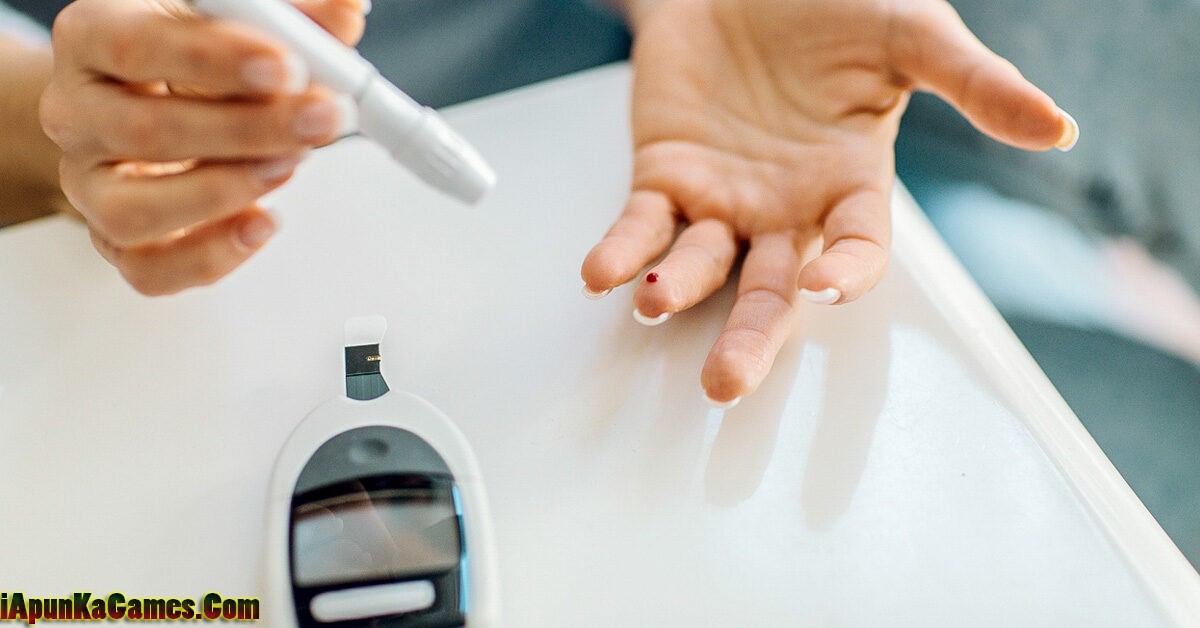If you have been diagnosed with diabetes, controlling your blood sugar levels is a crucial management requirement. Nevertheless, a sugar testing machine proves to be a great help in such cases. Here we’ll go over how a machine for sugar tests works and how to use it to monitor your blood sugar levels.
A blood glucose metre that measures your blood sugar (glucose) levels is a sugar testing machine. It is a little carry-on device that can monitor the peaks and valleys of your blood sugar levels. A sugar testing machine aids in taking at-home blood sugar readings for diabetes, type I or type II and is beneficial to treat gestational diabetes.
- It is simple to use and produces results quickly.
- Blood sugar can be checked at home.
- It assists in monitoring the course and results of the treatment.
- You become aware of the impact of diet and activity on glucose levels at the time of testing.
Self-blood glucose monitoring helps people who may have or are experiencing challenges brought on by an abnormal blood glucose state in controlling their sugar levels. In general, children, adolescents and adults with diabetes mellitus type 1 or type 2 should periodically have their blood sugar levels checked and observed.
Additionally, women over the age of 18 who are pregnant and those with certain medical conditions should closely monitor their blood glucose levels. Even at home, it can be completed quickly and easily by oneself using an efficient sugar testing machine.
Table of Contents
Avoid These Mistakes While Using a Sugar Testing Machine
The performance of your sugar testing device and your proficiency with the procedure will determine how accurate the readings are. Avoid the following errors to ensure the machine for the sugar test produces accurate results.
Incorrect spot for testing
You can get a wrong impression from images on many sources about where to prick your finger to draw blood. The sensation of a “prick” should be present rather than pain. Due to the presence of numerous nerves, testing the finger pad might be uncomfortable.
A good amount of blood can be obtained for testing by poking along the sides or edges of fingers, ideally the middle or ring fingers, to lessen discomfort.
Using expired strips and reusing lancets
In addition to your blood, lancets and test strips are crucial for glucose monitoring. As lancets get dull after each use, repeated use might result in excruciating agony. A lancet’s point will hurt less if it is sharper. Multiple and hesitant cuts may result from pricking using blunt lancets. Furthermore, readings from test strips that have expired are likely to be incorrect.
You lose by attempting to repurpose the lancet or used strip. It will hinder the development of your treatment in addition to producing inaccurate findings. Check the test strip’s expiration date and use a fresh lancet for each test.
Not washing hands before testing
Before testing, using alcohol, licking, touching, eating or retaining dirty hands can result in discomfort and inaccurate findings. These actions can saturate the sample and significantly alter the test results.
Wash your hands in warm water and mild soap. Please don’t clean them with any sanitiser. Take a towel to dry your freshly cleansed hands before taking the sample. Before testing, avoid using any antiseptics.
Using the Same Spot to Take the Sample
Your toes will eventually get stiff if they are constantly in contact with the rough surface of your shoes for several months. Nothing will be felt even after touching, pricking and peeling that edge. In the same way, pricking one finger causes little discomfort due to the calluses that develop over time. This may look simpler, but it has no real benefit.
To speed up the healing process, the World Health Organisation advises alternately utilising the middle and ring fingers. In addition to preventing pain, it will improve the reliability of the outcomes.
Blood Glucose Monitoring: Pro Tips
The findings and the date and time of the test should be recorded when using a blood glucose monitoring device. This is particularly important for diabetes in pregnancy treatment. The results can be recorded manually in a book intended just for blood sugar monitoring, or they can be recorded digitally on a computer. During your sessions, your doctor can ask for a record of the test results.
Self-monitoring of blood glucose levels has recently raised some concerns. One of these hurdles has to do with the monitoring equipment that is offered in pharmacies and how it has been calibrated. People with diabetes or pregnant women with diabetes in pregnancy treatment programs may not be treated appropriately if there are inaccuracies in the recording caused by a confusing calibration.
The machine for the sugar test must be carefully chosen to avoid that from happening. For the whole blood or the plasma, the instrument should have an established standard of measurement. Additionally, it should display on the instrument the range of blood glucose values it is capable of measuring.
On the device’s instruction manual, conversion formulas from one unit to another should be prominently displayed. It enables simple conversion of result values to desired units based on one’s location.
It’s Time To Check the Blood Sugar Levels Precisely
It’s quite simple and quick to check your blood glucose levels on your own. Today, testing sugar levels at home are simpler than ever, thanks to the wide variety of sugar-testing devices available.
The most important thing is that the machine for the sugar test must be precise, and you must adhere to the proper instructions for using sugar testing equipment. Furthermore, you can get assistance from your doctor or pharmacist in selecting the right sugar testing machine depending on your need and other considerations like ease of use, accuracy, or cost. In general, all sugar testing machines are accurate. It is usually advisable to exercise prudence and common sense because there can be some variation in metres.

